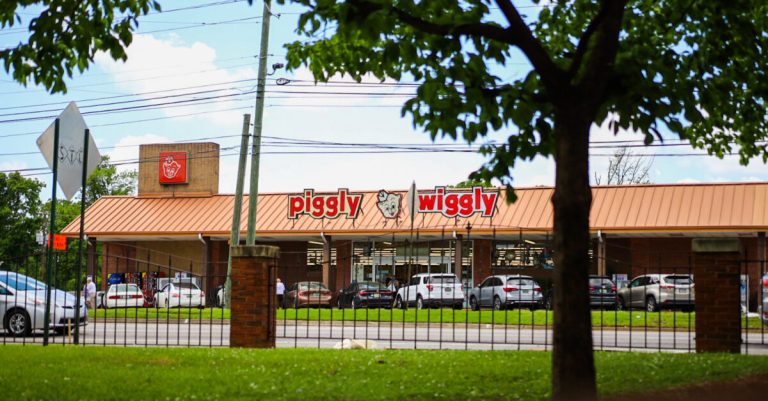UAB is planting an environmentally conscious future. Learn how the campus’s more than 4,000 trees are improving Birmingham
Reading time: 6 minutes
Sponsored

This Spring, visit the Vulcan Park and Museum. Purchase a ticket to take the elevator to the top of Vulcan’s pedestal. Look north toward the Birmingham skyline. Below you and to the west is the UAB campus, spread out over 100 blocks on Birmingham’s Southside.
From your perch at Vulcan, you see the buildings that house research facilities and a world-class hospital. It is also the workplace of faculty and staff and home to many students.
Nestled among UAB’s buildings and open spaces there is a lush forest with over 4,400 trees covering the campus like a green blanket.
UAB’s trees are one of the university’s greatest natural resources. Here is why.
The Plan, Numbers and Value

This past winter, UAB launched a new sustainability strategic plan that will transform the university’s academic and medical campus by the year 2025.
Preserving and increasing the number of trees on campus is a major priority in the plan.
As an urban institution, UAB plans to invest significantly – greening the campus – through space allocation, communication, landscape and public realm design standards. And these kind of ventures are paying off.
A couple of years ago, UAB Sustainability intern Nina Morgan inventoried all 4,400 trees on campus, with roughly 900 of those trees planted in the past five years. Her study was used to calculate the value of the trees throughout the campus.
According to UAB Sustainability, since the university’s start 50 years ago, its trees have provided an estimated $125 million worth of air pollution control, $126 million in soil erosion control and recycled at least $152 million worth of water.
In 50 years, a single tree can generate up to $100,000 in controlling air and soil pollution in addition to conserving water in ecosystem services.
Trees are not just of monetary value. UAB researchers have found that spending 20 minutes in an urban park simply makes people happier.
Tree Campus USA

One way UAB maintains stewardship of their forest canopy is meeting the standards set forth by the National Arbor Day Foundation to become a Tree Campus USA. UAB has received this recognition for 5 straight years.
“It’s exciting to see UAB making such a commitment to prioritizing green spaces on our campus and ensuring we have a healthy, happy tree population in the midst of our urban location,” said Julie Price, PhD., manager of UAB Sustainability.
To become a Tree Campus USA, the university must meet the following criteria:
- Establish a tree advisory committee
- Develop a campus tree-care plan
- Dedicate annual expenditures for its campus tree program
- Host an Arbor Day observance
- Sponsor environmentally-related student service-learning projects
Heritage Trees – Live Oak and the Hippocratic Tree

In the midst of UAB’s 4,400 trees there are a few special ones that are cherished on campus.
Live Oak at the Mini-Park
Perhaps the most popular trees on campus are the live oaks on the UAB Mini Park at university Boulevard and 14th Street South, across from Heritage Hall. Providing shade for the statues of UAB founders and presidents Dr. Joe Volker and Dr. Scotty McCallum, these beautiful and grand live oaks are hundreds of miles north from their traditional geographical range.
Hippocrates Tree

Located in the 15th Street Greenway east of the Hill Student Center, the Platanus orientalis (Hippocrates tree) is a descendant of the tree under which Hippocrates, often called the father of Western medicine, taught students of medicine on the Greek island of Kos around 400 B.C.
This rare tree was donated by an anonymous donor and planted in 2016 in honor of the late William Brown Deal, M.D., dean emeritus of the School of Medicine.
Preserving Trees

UAB’s enrollment is growing. Many new buildings are being constructed throughout campus including dorms and new classrooms. The growth poses a serious challenge for UAB Facilities project managers.
They have proactively confronted arising issues by:
- Maintaining a net-zero loss of trees policy on campus through the Tree Evaluation, Preservation and Mitigation Procedure.
- Engaging all parties involved in construction about the value of trees on campus.
- Protecting trees from the beginning of the construction process until the completion of the project.
- Establishing procedures to ensure communication among all parties in setting forth expectations concerning tree protection.
A great example of these kinds of best practices set into motion is the preservation of the tree pictured above near the recently renovated School of Nursing.
Planting for the Future – 50 trees for UAB’s 50th Anniversary

In celebration of UAB’s 50th Anniversary, the university will be planting 50 trees this year. The Facilities team is also continuously replacing fallen and damaged trees.
One way you can give back to the university and the Birmingham community as a whole is by donating to the UAB Tree Fund.
“At UAB, we recognize our tree canopy as vital public health infrastructure that reduces urban air temperatures, improves air quality, increases pedestrian comfort, reduces flooding, and improves well-being,” said Price. “The trees we plant and care for now will benefit our community for generations to come.”
Be a part of the 50th Anniversary by donating a tree in the memory of a friend or loved one. That one gift will “give back” in so many ways – cleaner air, land, water and the general well-being and happiness of the community.
Sponsored by




